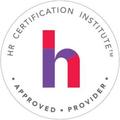Talent Mobility and Internal Talent Marketplaces - Workforce Planning Exchange

At our June 2nd meeting we focused on the topic of talent mobility and internal talent marketplaces (ITM). I4cp Senior Research Analyst and WPE lead Tom Stone set context by sharing some of the relevant data from our Accelerating Total Workforce Readiness report. He facilitated exercises where WPE participants on the call used the annotation tools in Zoom to provide input on aspects of talent mobility. Here are the highlights from the meeting
From i4cp's Internal Talent Marketplaces & Talent Mobility Series:
- The Talent Mobility Next Practices Model indicates just how broad the conception of talent mobility should be. It’s not just about upward movement, promotion, and succession planning. High performing organizations plan for different types of mobility far more than low performing organizations. In fact, NOT planning for any of these other types of talent mobility correlated to negative market performance.
- The Accelerating Total Workforce Readiness report found that 39% of survey participants said for most employees it’s easier to find a job externally than it is internally. In fact, 43% still suffer from managers hoarding talent. Look at the Stop Talent Hoarding and Drive Talent Mobility infographic to see more.
We asked the following 2-part poll of meeting participants:
- Which best describes your perspective regarding talent mobility in your organization?
- 2 participants = It is quite good, with only minor improvements needed
- 8 participants = It is good for some roles or in some areas, weak in others
- 12 participants = It is OK, but could be improved
- 7 participants = It really is an area we need to improve significantly
- To what extent is talent hoarding an issue at your organization?
- 1 participant = Very high extent
- 7 participants = High extent
- 15 participants = Moderate extent
- 3 participants = Low extent
- 1 participant = Very low extent
What are the barriers and challenges when trying to increase talent mobility at your organization?
- Lack of an enterprise mindset. Instead, there is a siloed mindset with a belief that your part of the organization is overly specialized.
- Lack of transparency and automation around project or gig development opportunities (related to a lack of technology).
- Overly complex recruiting processes such as different recruiters for internal vs. external candidates, etc.
- Lack of understanding around what talent mobility is, why it’s important, and what the organization’s processes are to create mobility.
- Job descriptions that are too functionally specific rather than focused on a common skills vernacular.
- Lack of an internal diverse workforce.
- Lack of time to upskill someone for a development project or gig.
- Technology ineffectiveness creating poor experiences within an ITM.
How are you measuring talent mobility? What metrics are used for talent mobility goals?
- Career progression for diverse employees on a quarterly basis.
- Number of jobs filled internally versus externally.
- Promotion rates by gender and ethnicity.
- Talent mobility rates per function compared to the rest of the company.
- Lateral movements compared to promotions.
What technologies (e.g., vendors, modules, etc.) are you using to increase talent mobility?
- Workday
- SuccessFactors
- Empath
- Gloat
- Burning Glass/EMSI
- Workday Learning + Udemy for upskilling
- Additional resources include the Workday’s Talent Marketplace Flash Call, How Booz Allen Built a Talent Skills Database, and the Internal Talent Marketplaces & Talent Mobility Series.
What are some key lessons learned in establishing an internal talent/opportunity marketplace?
- Tell stories of success and publicly recognize leaders who are mobilizing talent in large forums.
- Continuously educate and partner with business stakeholders. Bring them along in the process, as changing towards a skills and talent mobility mindset can be challenging.
- Invest in the AI technology to better understand what talent you currently have, what talent you need, and then recommend the right jobs to the right people.
- Use an ITM as a benefit to attract more diverse external candidates.
- Consider the context when tracking data. Sometimes lateral movements may not make sense in a certain situation.
- Job rotations can be valuable. Doing the same job in a different environment or location can help you learn, too.
- It takes time to implement an ITM. One organization had a 3-year strategy. Only within the last year have many organizations opened the ITM to roles, not just projects/gig.
- Watch for profiles that are dominated by performance rather than skills.
What are the key practices to enable talent mobility?
- Create one common skills taxonomy.
- Ensure that job descriptions focus on the skills needed and they use the common skills taxonomy.
- Publicly recognize leaders that are champions of talent mobility.
- Identify a role in TA, or elsewhere in HR, that owns talent mobility.
- Create support structures for employees transitioning into a new role.
The i4cp Workforce Planning Exchange is a group of workforce planning and related professionals who come together to share and discuss their challenges, successes, lessons learned, and leading practices in striving to accelerate workforce readiness at their organizations. The goal of the group is to share information and insights, and develop and share tools and practices that will aid in enhancing workforce readiness and workforce planning capabilities.
log in




